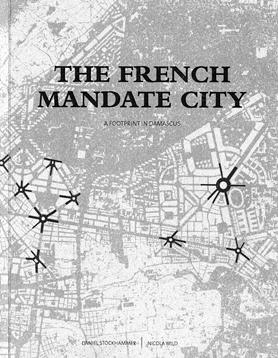The French Mandate City
A footprint in Damascus

Students: Daniel Stockhammer, Nicola Wild
Location: Damascus
Date: October, 2009
Type: Research project, student work
Background
Damascus fell to the Ottoman Empire in 1516, which (except for a brief occupation by the Egyptians from 1832 to 1840) remained in the city for the next 400 years. In the early years of the twentieth century, Arab nationalist sentiment in Damascus, initially cultural in its interest, began to take a political coloring, largely in reaction to the turkicisation program initiated by Istanbul. This triggered an Arab Revolt which, supported by the British army, managed to gain control of the city in 1918, coinciding with the end of World War I and the disintegration of the Ottoman Empire at large. Already during World War I, secret negotiations between France and British powers took place, dividing the Middle Eastern regions of the ailing empire into respective zones of influence, resulting in the formalized “Sykes-Picot Agreement”. Syria was declared as a zone of “Direct French Control”, very much resented by the local population. In 1920 a French army commanded by the General Mariano Goybet crossed the Anti-Lebanon Mountains, defeated a small Syrian defensive expedition at the Battle of Maysalun and entered Damascus. The French made Damascus capital of their League of Nations Mandate of Syria. On 21 June 1941, Damascus was captured from the Vichy French forces by the Allied troops and Syria gained full independence in 1946.
Themes
Even though French rule over Damascus lasted only twenty years, the impact of the colonial forces and its planning principles were considerable, extending well into the second half of the 20th century. Contrary to Lebanon, which can be said to have a more sympathetic relationship to its colonial power, the French were always considered as conquerors and as hostile in Syria. The French themselves also conceived of the local population not as citizens, but as colonialized subjects, which is reflected in the urban planning approach: The town planners planned new neighborhoods that were in conscious contrast to the existing urban fabric, intended also to demonstrate the superiority of hygienic, tree-lined areas to the overcrowded and disorganized historical city, that was considered as being backwardly and barbaric. The master plan was developed by Rene Danger and Michel Ecochard, who was also responsible for the Beirut master plan. Apart from a complete reorganization of the infrastructure and traffic flow, it conceived new neighborhoods north and north west of the city center, which today are still home to the upper income level of the society and the diplomatic institutions.
Project
What is the urban idea of the ‘French Mandate City’? What is the difference between the French presence in Beirut and in Damascus? Can the French master plan be described as a device of segregation? What is the lasting impact of the Mandate era?
Download the Book PDF

